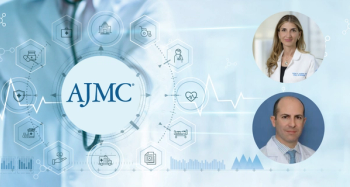
Meet GenBank, the Tool that lets Scientists Unlock the Secrets Within the Data
What is the most important research tool in biology paid for by taxpayers that they don't know exists? It might be GenBank, the open-access database maintained by the National Institutes of Health, which allows scientists to dramatically reduce the time it takes to find druggable targets and identify genes in the evolution of personalized medicine.
FOR IMMEDIATE RELEASE APRIL 25, 2014
Meet GenBank, the Tool that lets Scientists Unlock the Secrets Within the Data
PLAINSBORO, N.J. — Cures for cancer. Therapies for psoriasis and rheumatoid arthritis. Maybe, someday, a vaccine to prevent HIV. Scientists working on these diverse treatments and countless others all rely on the same tool to advance their work: a government-run, open-access database known as GenBank.
The average taxpayer likely has no idea what GenBank is or why it’s so important to biological research. But if that person or his loved one has metastatic colorectal cancer, for example, he would want to know about research made possible by GenBank, which showed that the drug Vectibix should be used with chemotherapy only in certain patients who do not have RAS mutations.
In the inaugural issue of Evidence-Based Immunology and Infectious Disease, the fourth title in the news series from The American Journal of Managed Care, Managing Editor Surabhi Dangi-Garimella, PhD, takes a look at the history, the reach, and the practical applications of GenBank, which touches the lives of millions of Americans while remaining unknown to most of them.
GenBank began in 1979 as the brainchild of Walter Goad, a scientist at the Los Alamos National Laboratory, and took shape after 1982 with funding from several agencies. Today, it is housed within the National Institutes of Health. GenBank’s utility comes from its BLAST software (Basic Local Alignment Search Tool), which allows researchers to study an orphan sequence cloned in a laboratory by matching it to a better-characterized sequence found elsewhere. Software tools allow researchers to narrow the hunt to specific sections of the genome. Think Google for genetics research, only with much more precision.
This is the tool that has allowed cancer therapy to go from firing a shotgun to threading a needle; GenBank, along with its overseas counterparts, is allowing science to match the treatment to the tumor with ever-increasing accuracy, improving survival rates while limiting side effects. In many cases, cancer may not be “cured,” but it becomes a chronic disease, and life is prolonged.
In the area of infectious disease, GenBank is speeding the time it takes scientists to isolate promising druggable targets and to rule out those that will not work. For example, the constantly mutating nature of HIV-1 would make research into a potential vaccine impossible without the database, which helps scientists to isolate individual B cells and clone potent and broadly neutralizing antibodies from them.
This same mechanism, in turn, has the potential to create savings in the drug development process. (For this reason, it’s not a surprise that European databases, counterparts to GenBank in an international collaborative, are forming partnerships with pharmaceutical companies.)
What makes GenBank and its fellow databases work? In short, it’s the openness of the system, and the spirit with which scientists have embraced that openness. Journals could never publish all the data alongside the research generated today, but links to the data are continuously uploaded for all to see. The peer-review process weeds out errors.
The next step in the use of this data, a field called translational bioinformatics, is the ability of researchers in the realms of basic science, medicine, and healthcare administration to work across platforms — for the data to talk to each other, and to reveal the secrets within. Companies are emerging to create these platforms, for the benefit not only of the world of research, but ultimately, for the benefit of patients.
About the Journal
The American Journal of Managed Care, now in its 20th year of publication, is the leading peer-reviewed journal dedicated to issues in managed care. In December 2013, AJMC launched The American Journal of Accountable Care, which publishes research and commentary devoted to understanding changes to the healthcare system due to the 2010 Affordable Care Act. AJMC’s news publications, the Evidence-Based series, bring together stakeholder views from payers, providers, policymakers and pharmaceutical leaders in the areas of oncology, diabetes management, respiratory care, and immunology and infectious disease.
CONTACT: Mary Caffrey (609) 716-7777 x 144 or Surabhi Dangi-Garimella
Newsletter
Stay ahead of policy, cost, and value—subscribe to AJMC for expert insights at the intersection of clinical care and health economics.







































